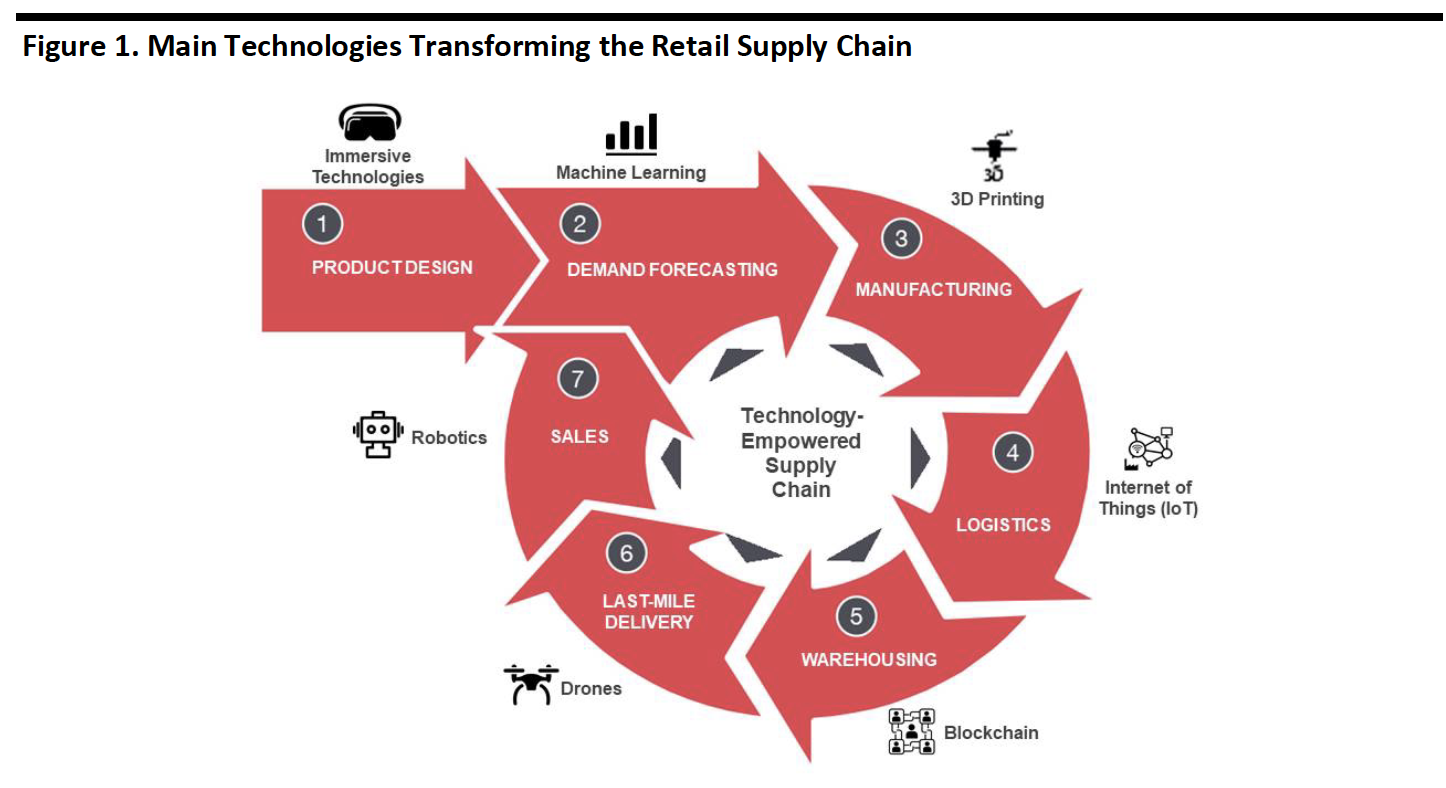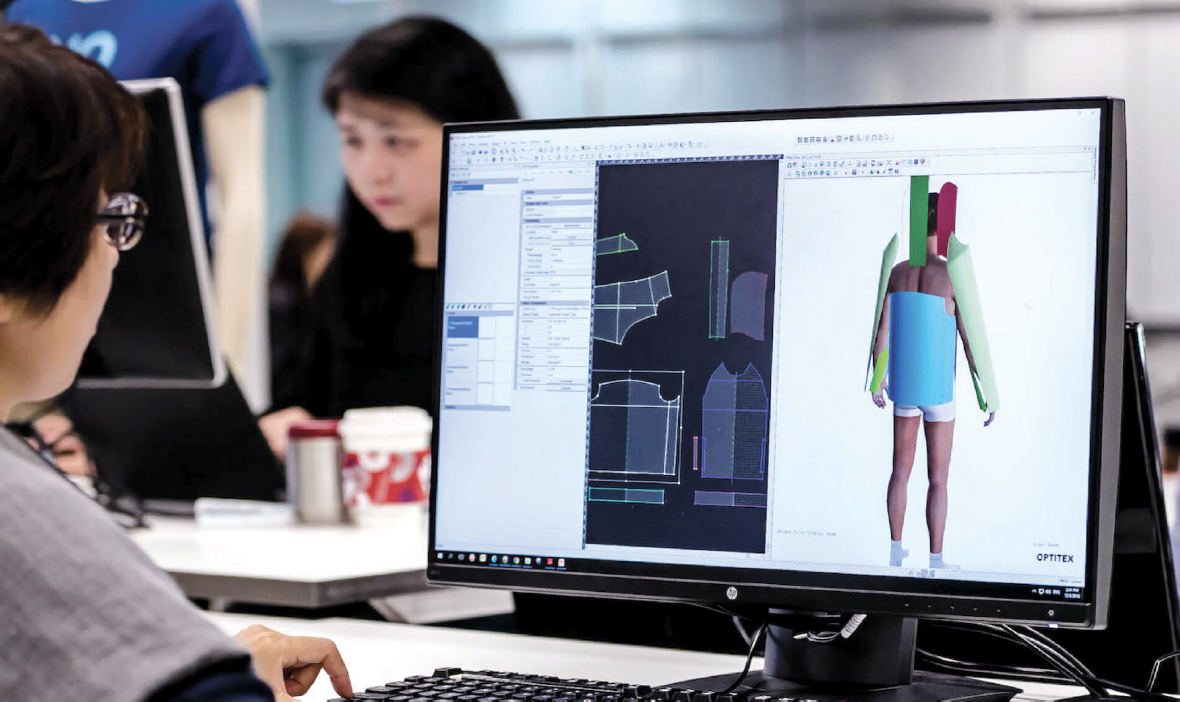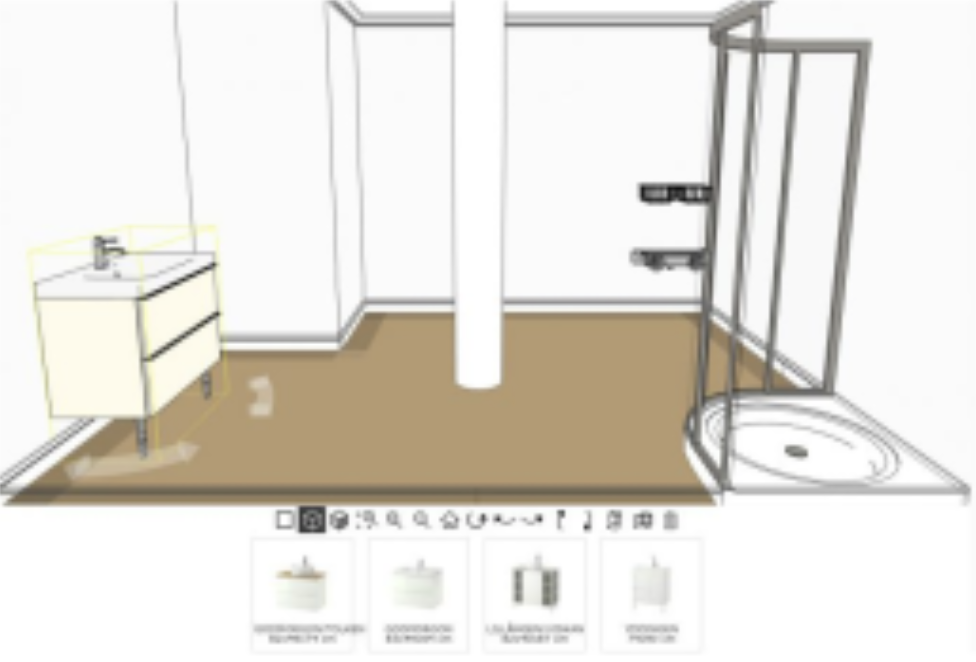
albert Chan
 Source: Coresight Research[/caption]
Source: Coresight Research[/caption]
3D design technology can create digital models of objects through the help of computer-aided design (CAD) software such as Adobe Illustrator. Companies in manufacturing and fashion are increasingly using CAD software to design new products with increased efficiency and accuracy. According to market intelligence company Reports and Data, the Visualization and 3D Rendering Software market is expected to grow from $1 billion in 2018 to $3.7 billion by 2026.
In this report, we outline the benefits of 3D technology to the supply chain, and applications of the technology in the fashion and consumer goods industries.
Business Case for 3D Design
Designing, product development, sampling and production in the fashion industry are often a complex and time-consuming processes. Even more challenging: Consumers’ preferences are changing more quickly, and they expect to see the latest trends in store more quickly. Retailers are under pressure to design and roll out new product types more quickly. To overcome these challenges, companies are digitalizing supply chains to speed production lines – and using 3D technology for faster design and sampling.
Below, we outline 3D design and the benefits the technology offers to fashion and retail.
How Supply Chains Can Benefit
3D design offers many benefits:
- Shorter time for product development: Compared with traditional rendering techniques, 3D rendering shaves weeks off the design and sampling process.
- Less labor required: Some design and sampling work that usually requires four people can be completed with only one person via 3D rendering.
- Lower cost and reduced wastage: Digital prototypes can be shared instead of physical ones.
- Shorter time for production and higher precision: More details are available through 3D design, speeding production and making the process more accurate.
- Streamlines communication: Sharing 3D renderings through cloud-based platforms enables designers, suppliers and retailers to collaborate more easily.
Examples of Applications
Global fashion supply chain management specialist Li & Fung started its digital transformation in September 2017, focusing on 3D design and virtual sampling through its digital platform. Once a design has been approved, the digital platform creates a virtual sample in less than a week, whereas a traditional physical sample would typically take 10-15 days. And with virtual samples, multiple iterations in different colors and patterns can be created without losing important details such as stitching, yarn gauge and color.
[caption id="attachment_92682" align="aligncenter" width="700"] Li & Fung’s digital platform
Li & Fung’s digital platformSource: Li & Fung[/caption]
Apparel-technology company Alvanon launched the Alvanon Body Platform (ABP) in January, a cloud database offering 3D fit standards for the global apparel industry. ABP provides a fast, accurate and consistent way for brands and retailers to access its over 6,000 virtual 3D avatars and to share 3D fit and core body standards with supply chain partners. 3D digital design enables brands to create realistic prototypes in different styles without having to actually make them, eliminating huge amounts of waste each year.
[caption id="attachment_92683" align="aligncenter" width="700"] Alvanon Body Platform
Alvanon Body PlatformSource: Alvanon[/caption]
Apparel brand Theory uses 3D fashion design software CLO to speed the design process and focus on the front end of a garment’s lifecycle. Theory has been able to design its full line on CLO’s 3D software. Theory’s emphasis on fabric and fit aligns with CLO’s lifelike representations of a material’s behavior.
[caption id="attachment_92684" align="aligncenter" width="700"] CLO
CLOSource: CLO[/caption]
IKEA’s 3D Home Planner app offers lets customers experience IKEA products in a 3D virtual environment which can be mapped onto any room in the home. Customers log into IKEA’s Home Planner app, input the dimensions of the room – and even place obstacles such as posts, partitions, windows and doors. Once the virtual room is created, customers can add details then superimpose images of IKEA items to see how they would look in the home.
[caption id="attachment_92685" align="aligncenter" width="700"] IKEA’s 3D Home Planner
IKEA’s 3D Home PlannerSource: IKEA[/caption]
Key Insights and Implications for Retailers
3D design technology helps retailers better meet fast-changing consumer demand, while also improving product quality and cutting costs. The technology is already helping many companies in fashion and furniture create new product designs more quickly and with higher precision. With 3D design software companies making steady improvements in what their technology can do, the benefits are likely to continue to expand in the coming years.